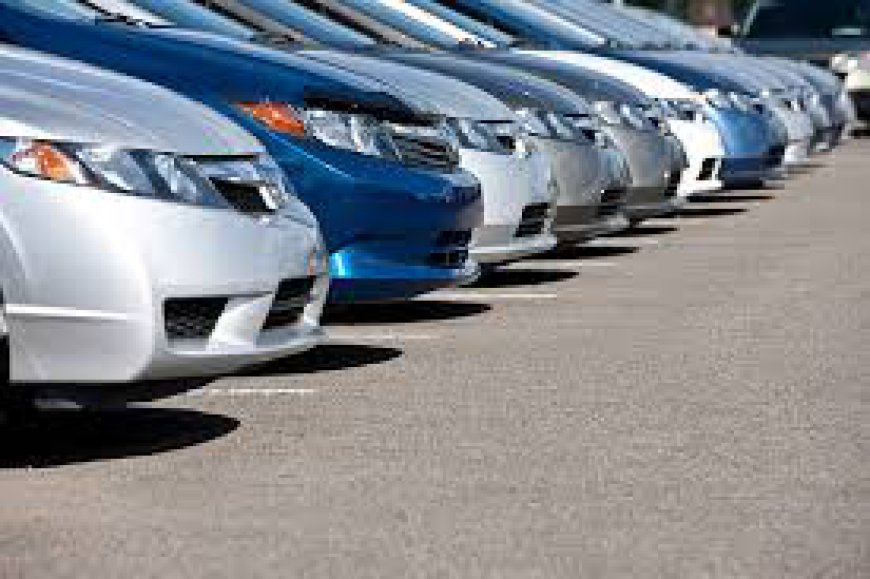How New Cars in Pakistan Are Adapting to Local Climate Conditions

Pakistan's diverse climate poses unique challenges for vehicles, ranging from extreme heat in the southern regions to the cold and fog in the northern areas. Automakers are increasingly recognizing these challenges and adapting their vehicles to ensure better performance, reliability, and comfort. Here’s how new cars in Pakistan are adapting to local climate conditions:
1. Enhanced Cooling Systems
Pakistan's hot climate, particularly in the summer months, demands efficient cooling systems in vehicles. Automakers are incorporating advanced cooling technologies to address this issue:
-
Improved Air Conditioning: New cars come equipped with more powerful and efficient air conditioning systems that can quickly cool the cabin even under extreme heat.
-
Heat-Resistant Materials: Manufacturers use heat-resistant materials for interiors to minimize the impact of high temperatures. This includes UV-resistant coatings for dashboards and seats.
-
Advanced Radiators and Coolant Systems: Cars are designed with upgraded radiators and cooling systems that effectively manage engine temperatures, preventing overheating during long drives in hot weather.
2. Robust Suspension and Underbody Protection
The diverse terrain across Pakistan, from urban roads to rugged rural paths, necessitates durable suspension systems and underbody protection:
-
Enhanced Suspension Systems: New models feature reinforced suspension systems designed to handle rough and uneven surfaces, providing a smoother ride and better vehicle durability.
-
Underbody Coatings: To protect against damage from debris and corrosion due to high humidity or salt on coastal roads, many new cars are equipped with underbody coatings that provide added protection.
3. Effective Climate Control Features
To enhance driving comfort in varying weather conditions, new cars in Pakistan are equipped with advanced climate control features:
-
Dual-Zone Climate Control: This allows drivers and passengers to set different temperature zones within the car, catering to individual preferences.
-
Heated Seats and Steering Wheels: In regions with colder climates, such as northern Pakistan, heated seats and steering wheels provide additional comfort during chilly weather.
-
Automatic Defogging Systems: These systems help maintain clear visibility by automatically clearing fog or condensation from the windows.
4. Durable Exterior and Interior Materials
Cars in Pakistan are increasingly using materials designed to withstand local environmental conditions:
-
UV-Resistant Paints: To combat the intense sun, automakers use UV-resistant paints that prevent fading and deterioration of the car’s exterior.
-
High-Quality Fabrics: Interiors are made from fabrics and leathers that are durable and less prone to damage from heat, humidity, or sunlight.
5. Advanced Battery and Electrical Systems
The extreme temperatures can affect battery performance and electrical systems. New cars are designed with:
-
High-Performance Batteries: Batteries are engineered to perform reliably in both high heat and cold conditions, ensuring consistent performance and longevity.
-
Enhanced Electrical Systems: Modern vehicles are equipped with advanced electrical systems that are better insulated and protected against temperature fluctuations.
6. Improved Fuel Efficiency
Given the varying fuel quality and climate conditions, new cars are designed to be more fuel-efficient and environmentally friendly:
-
Efficient Engines: New models feature engines optimized for better fuel efficiency and reduced emissions, accommodating the local fuel quality and driving conditions.
-
Hybrid and Electric Vehicles: The introduction of hybrid and electric vehicles offers a sustainable alternative, providing better fuel efficiency and lower emissions.
7. Innovative Technology for Extreme Conditions
Automakers are integrating cutting-edge technology to enhance vehicle performance under extreme conditions:
-
Adaptive Headlights: To improve visibility during foggy conditions, adaptive headlights automatically adjust their brightness and direction based on driving conditions.
-
Traction Control Systems: These systems help maintain control on slippery or uneven surfaces, enhancing safety in adverse weather conditions.
8. Local Testing and Customization
Manufacturers are conducting local testing to ensure that their vehicles are well-suited to Pakistani conditions:
-
Regional Testing: Cars are tested in various regions of Pakistan to evaluate their performance in different climate conditions and terrains.
-
Customization for Local Preferences: Automakers often offer features and specifications tailored to local preferences and requirements, such as specific tuning for air conditioning or suspension settings.
Conclusion
As Pakistan’s climate presents a range of challenges, new cars are increasingly being designed and modified to meet these conditions. From advanced cooling systems and robust suspension to durable materials and innovative technology, automakers are making significant strides in ensuring that vehicles perform reliably and comfortably across the diverse climates of Pakistan. These adaptations not only enhance driving experience but also contribute to the overall safety and longevity of the vehicles in the local environment.

 muslim
muslim